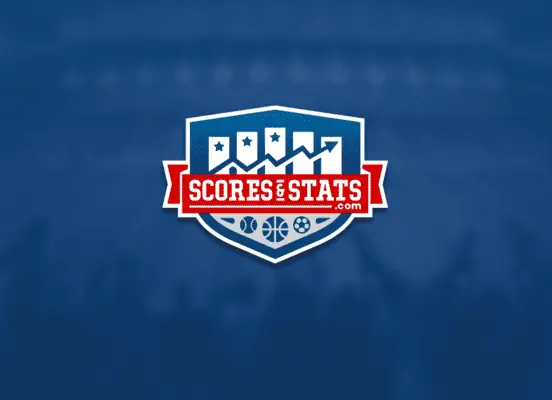Table of Contents
This is everything you need to know about sports betting bankroll management.
Key Points
– Smart betting bankroll management protects bettors from losses.
– There are a number of betting systems that can help bettors grow their bankroll.
Everything You Need to Know about Sports Betting Bankroll Management
Betting on sports can be a fun and inexpensive hobby or a full-time job. It depends on the level of risk with which you’re comfortable and how passionate you are.
Whether you’re an inexperienced bettor or a “sharp” bettor who typically does pretty well, it’s crucial to properly manage your bankroll. This can help you mitigate losses while trying to increase profits.
Proper sports betting bankroll management is a key to success.
What is Betting Bankroll Management?

Bankroll management is the process of practicing responsible sports betting. It also helps ensure any losses don’t compile and become a major problem. It’s no different than managing your day-to-day finances to ensure you have enough money for other areas of life.
Just like in the real world, you need money to make money in sports betting. If you’re too aggressive with your bets and lose money, you’ll have less to try and make back any losses.
You can protect your funds by only betting a certain amount of money with which you’re comfortable. If you are comfortable losing $100 on a night at the casino, that $100 is your casino bankroll. It’s the same for sports betting. There is an amount that you would feel comfortable losing. Bet with that money and only that money.
The best way to mitigate losses and protect your bankroll is to establish betting units. While you can certainly change the amount of money you wager on certain outcomes, the best practice is to create a standard betting unit. This also helps you keep track of your performance.
How to Determine Your Betting Units
Depending on how much is in your bankroll, your standard betting unit should be anywhere between 1 to 5 percent of your entire bankroll. This should help you win a decent amount on single outcome bets and prevent you from losing too much too soon.
If you’re just starting out with sports betting, you might want to start with a relatively small bankroll of $100. One percent of $100 is $1 and five percent is $5. You might wager $5 on bets where you have a lot of confidence. The $1 bets are on those you like, but have less confidence in.
You should look for games with even odds so you can double up your money. It’s also best to avoid parlays when exercising proper betting bankroll management. Parlays are hard bets to win. Keep them to a minimum.
For those with higher bankrolls, the minimum and maximum betting unit will be higher. For example, a bettor with a $1,000 bankroll would be betting between $10 and $50.
You can keep track of how many units you have won or lost. This allows you to compare yourself against other bettors that might wager more or less than you do.
Re-Evaluating Your Bankroll and Betting Units
Until you begin to have consistent success with your bets, you should probably stick to a relatively low bankroll. That might be in the $100 to $200 range. If you continue to win and build up your bankroll, it might be time to adjust the size of your betting units.
It’s up to you to adjust as necessary. You might be comfortable betting on a casual basis, or you might want to try and take sports betting to the next level. If you built your $100 bankroll into $500, a $5 bet might seem too low. If you have been winning at a 55 percent or better clip, adjusting your unit size might be a good idea.
The beauty of betting on sports is that it’s up to you how active you want to be or how much you want to bet. Sound betting bankroll management will always keep you from losing too much.
The Flat Betting Model
There are different betting models you can try to increase your profits. The flat betting model is basically an approach where you would adjust your bet based on the juice required to win one unit.
Here’s how it looks. Let’s say you want to win one unit on a team favored at -110. You’ll need to risk 1.1 betting units to recoup another unit. Conversely, if you’re betting on a +110 underdog, you would only need to risk 0.9 betting units. If you’re looking at a +250 underdog, you can either bet .4 units to win 1 unit or bet 1 unit to try and win an additional 2.5 units.
Betting Bankroll Management – Confidence Model

The confidence model is a tricky and subjective one. It can help you increase your bankroll size quickly. It can also quickly deplete your funds. Basically, you assign a confidence value to each bet and wager more units on games about which you’re more confident.
Start with a scale of 1-3 for confidence value. If you like a team at -110 to cover but aren’t totally confident in that bet, you could just bet one unit. You might like another to cover and have complete confidence. You wager three units on the bet.
It is advised that you keep track of your record at each confidence level. If you lose more high-confidence wagers than you win, it may be time to reevaluate the process. However, if your high-confidence plays perform much better than your other wagers, it might be time to increase your bet size for those wagers.
The 1-3-2-6 Betting System
The 1-3-2-6 betting system is one of the best strategies for mitigating loss when using betting units. You’ll need to go on streaks to significantly increase your bankroll, but it protects you against major losses during losing streaks.
Bettors start with one betting unit. If the first bet is a winner, you make another bet of three units. You’ll then bet two units and, if you win again, six units. You start back at one if you win four in a row. You also start back at the beginning after every loss. This means you’ll profit by winning either two or four in a row.






